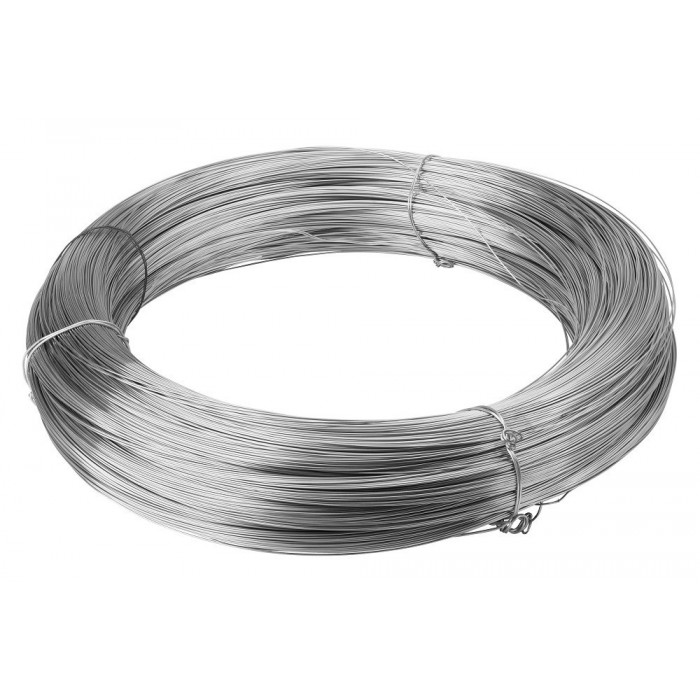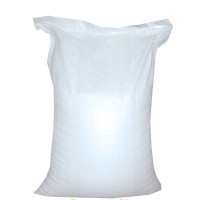Zhitomir wire PANCH-11 0.8-1.2 mm, steel wire, black (Metallobaza)
Knitting wire GOST 3282-74 is a round wire with a diameter of 1.2 mm to 6.0 mm. It is made from low carbon steel using heat treatment. Knitting wire is produced on special drawing mills by repeatedly pulling rolled steel billets through holes in the drawing die. As a result, the workpiece is deformed, its cross section decreases, and its length increases. This is how the transformation of a piece of metal into a wire occurs.
With regard to wire GOST 3282-74 we are talking about annealing. It consists in the following: the product is heated to a certain temperature, kept at this temperature for some time and then slowly cooled.
Annealing removes from the metal all the internal stresses accumulated as a result of previous processing, and makes it possible to obtain a uniform fine-grained internal structure. Steel with such a structure is practically not subject to brittle fracture and cracking. With high strength, it has excellent ductility and toughness.
It is used in almost all industries, in construction, utilities and in everyday life. In particular, it is necessary: when installing cables of any type; when installing fences, fences; for the manufacture of handles, buckets, ruffs, hangers for clothes; when creating stretch marks between pillars; in the production of staples, paper clips; when fixing meshes during reinforcement of thermal insulation; for linking the forest; when making wreaths.
For this wire, the names are also used: "black wire", "soft wire", "binding wire", "annealed wire".
The resistance of the outer layers of the metal to corrosion, certain groups of aggressive substances (gasoline, alcohols) affects the performance and durability. Grinding helps to remove plastic stresses from the surface, eliminate microscopic irregularities invisible to the eye, in which condensate can accumulate.
Depending on the procedures performed, the classification is valid:
Without additional finishing: there are residues of technological lubricants, copper, borax used during drawing;
Drawn, after grinding: the surface layer is turned mechanically at intermediate stages, then the semi-finished product is pulled through the dies until the specified standard size is reached;
Etched: after treatment with acids, the metal quickly oxidizes in the open air, forming a protective film of oxides;
Grinded: abrasives give the surface smoothness, remove small irregularities, and with them reduce the possibility of surface stresses.
Polished: after abrasives, products are rubbed using softer materials until a mirror finish is achieved.
Metal can be protected from wear by chemical treatment and anti-corrosion coatings. The following methods are provided:
Heat treatment: when heated, the metal oxidizes and becomes covered with scale, the external surface is black;
Oxidation: oxidation of the outer layers prevents moisture from entering the thickness of the metal, after the procedure, tint colors remain;
Heat treatment in protective environments: light wire.
Types of coatings:
Non-metallic: polymers, phosphating;
Metal: zinc, tin, copper, aluminum, brass.
At the final stages, the products are tested and packaged according to the form of delivery: in skeins or coils with a brand (up to 1500 kg) or for use by the end user: in reels with indication of standards. Transportation is carried out in boxes, film or waxed paper.
Typically, wire, such as copper and aluminum, is obtained by drawing (drawing) a workpiece (wire rod) through successively smaller holes, or by continuous casting and rolling. If it is necessary to remove oxides and plaque, before drawing, the workpiece is pickled in a solution of sulfuric acid or other pickling agents, after which it is drawn on drawing mills and annealed in special furnaces. Annealing makes it possible to obtain uniform mechanical properties of the wire along its entire length, as well as to increase its strength. There are non-sagging tungsten wires that are used primarily in lamps and electronics because they can withstand temperatures up to 2000°C. [11] In order not to damage the surface of the wire, the working surface of the drawing bench is coated with grease. The finished wire is usually wound into coils and coils, which are convenient to transport and store.
The wire is produced with different surface: black, light, ground, polished. There is also a heat-treated wire: annealed, normalized, hardened. Steel wire can have a different anti-corrosion coating: galvanized, tinned, oxidized, varnished.
The wire is produced in various diameters (from tenths to tens of millimeters) and is used for the manufacture of electrical wires, hardware, springs, drills, thermocouples, electrodes, electronic devices, etc.decorative products.
At the stage of final processing, the metal wire may or may not be heat treated. Therefore, according to GOST 2333, it is classified as heat-treated and heat-treated. Heat treatment is carried out to remove hardening (internal stresses) of the metal, and also improves the parameters of viscosity, ductility or strength. Heat treatment technologies: annealing - the technology is used for low-carbon, medium-carbon and alloy steels in order to impart increased ductility to the joint venture. Annealing can be carried out without access to oxygen or with access to oxygen. Accordingly, the result is a white or black (coated with a layer of oxides) wire. "Blued" (black) is more resistant to corrosive processes; normalization - carried out for medium and high carbon steels. The wire slowly heats up by 30-35°C above the temperature of the Ac3 point, is maintained, and then cools down at natural air temperature; tempering - the process of heating hardened steel to a temperature below the critical temperature for a specified time and subsequent controlled cooling. Tempering reduces brittleness and hardness of steel, increases toughness; hardening and tempering - during hardening (heating of steel to a temperature above the critical one), an increase in the strength and hardness of the metal occurs. During the subsequent tempering, the effect of hardening is softened, the residual stress in the steel structure is removed; patenting - this technology is used for carbon and alloyed wire and involves heating to 920 ° C and subsequent cooling in molten salt or molten lead; thermomechanical processing - the processes of drawing and heat treatment are combined, after which quenching and tempering are required. Thermally untreated steel wire is represented by the following types: cold-drawn - made from wire rod by cold drawing. The billet is pulled through the drawing blocks forming the diameter (drawing effect is used); cold-rolled - to obtain accurate dimensions and high surface quality, wire rod is rolled at room temperature on special machines (plastic deformation effect); hot-drawn (heat-drawn) - a billet for obtaining various types of steel wire, manufactured by hot drawing; calibrated - wire that has been re-drawn with small reductions. This is done to obtain a high quality surface layer, reducing the range of deviations in size. By type of surface According to the method of finishing, steel wire is divided into two types - with a surface coating with a protective layer and without a coating. Uncoated wire is either heat treated or supplied untreated. Some types of such products are additionally polished or etched. To increase the operational life of the joint venture, to protect it from aggressive environmental influences and from damage, it is covered with a thin protective layer. The layer can be either metallic or non-metallic. Several technologies are used for applying a protective metal layer to steel wire: immersion in a melt of one or another type of metal; spraying; galvanic plating; galvanizing in various ways. As a result of different surface treatment methods, several types of steel wire are distinguished: with a metal coating. Zinc, copper, brass, aluminum and other metals and alloys can act as a coating, therefore, the name of the coating metal must be entered in the name of the product, for example, galvanized steel wire; with non-metallic coating. The protective function of the surface is performed by polymers; after heat treatment - light and black.
No questions about this product, be the first and ask your question.


